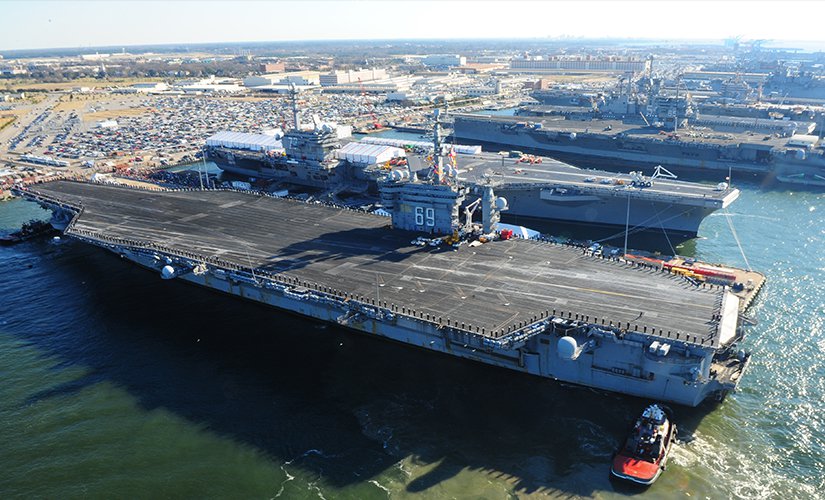CBO Examines Navy's FY 2020 Shipbuilding Plan

On October 8th, 2019, the Congressional Budget Office (CBO) released an analysis of the Navy’s Fiscal Year (FY) 2020 shipbuilding plan. This plan is based on the Navy’s 2016 Force Structure Assessment and outlines the Navy’s plan for reaching their goal of building and maintaining a fleet of 355 ships over the next thirty years. CBO’s analysis determined that the average yearly shipbuilding cost would exceed the Navy’s estimate.
CBO estimated the average annual cost of new ship construction from 2020-2049 to be $28.8 billion[1], an increase of $6.8 billion over the Navy’s estimated average for the same timeframe. Most of the difference in estimated shipbuilding costs is attributed to different methods for determining future ship costs. The CBO estimated the cost of ships that have been designed but not yet built using information provided by the Navy and the cost-to-weight ratios of similar existing models. Ships with designs still in development were valued by making educated assumptions about their “likely size and capabilities”. Approximately two thirds of the estimated cost difference are due to the CBO’s higher cost estimates of a new class of attack submarine designated SSN(X), and a new Large Surface Combatant (LSC) ship design.
Differences in the assumptions made about the growth of shipbuilding material and labor costs, and the use of shipbuilding funds, also factor into the CBO’s higher cost estimates. The cost of labor and materials in the shipbuilding industry grow at a faster rate than other industries, so the CBO’s estimates account for slightly higher construction costs for ships planned for later production. The CBO also notes that the Navy’s shipbuilding account is typically used to cover other expenses beyond new-ship construction. After adding their estimates of these additional expenses to their estimated shipbuilding costs, the CBO concludes that the expected average annual cost of the Navy’s shipbuilding plan will be $31 billion dollars. Based on the CBO’s total estimated costs, the FY 2020 plan will cost $205 billion more than the Navy’s estimate.
In addition to the uncertainty surrounding the final specifications and costs of future ship designs, there are two points which will affect the long-term accuracy of the CBO’s analysis. First, Navy officials have announced the creation of a new Force Structure Assessment (FSA). According to the shipbuilding report, this new FSA is scheduled to be completed by late 2019 and may change both the total number of ships the Navy aims to build as well as the distribution of ship types. It is difficult to speculate what the net effect of this new FSA will be, as a Naval official indicated that while the buildup of higher cost ships including LSCs may decrease, there may be an increase over the current planned force size of 355 ships. Second, the acquisition strategies approved by Congress could alter costs. The CBO’s analysis addressed that certain longer-term acquisition strategies, such as block buy contracting, could provide savings by ensuring stable work for the shipbuilding industry. While use of these strategies would be in keeping with the Navy’s desire for sustainable industry growth, they could result in excess material costs if there were deviations from the existing shipbuilding plan. Currently neither the Navy’s report nor the CBO’s analysis provides an estimate for the effect of block buy contracting or similar acquisition strategies.
[1] All dollar values given are in 2019 dollars
Topics: Navy, Navy News, Shipbuilding


Comments (0)